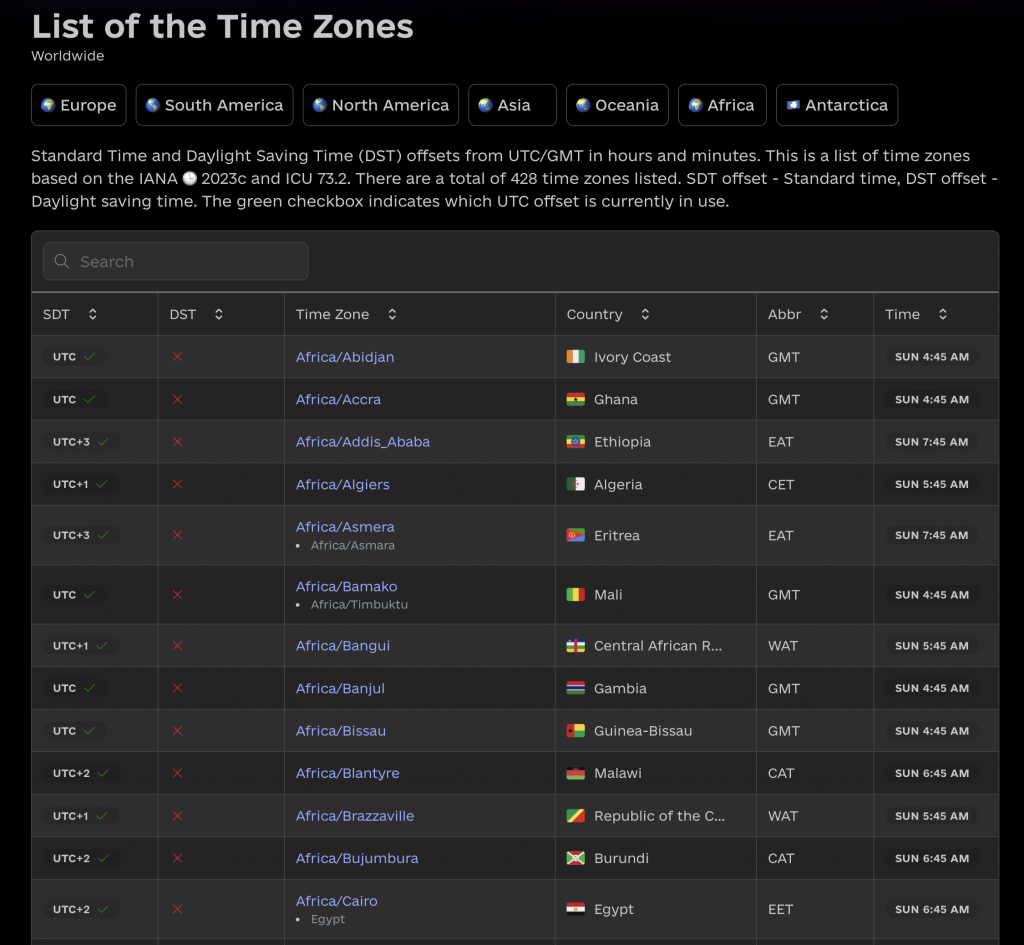Time zones are a crucial aspect of our global society, enabling us to coordinate activities across different regions of the Earth. The concept of time zones is tied to the Earth’s rotation and the apparent movement of the Sun across the sky. Here’s a comprehensive look at time zones, their history, significance, and how they impact our daily lives.
The Concept of Time Zones
Origin and Development
- Historical Background: Before the late 19th century, timekeeping was primarily local, with cities setting their clocks based on the position of the Sun. This system became problematic with the advent of railroads and telecommunication, which required a more standardized time system.
- Greenwich Mean Time (GMT): In 1884, the International Meridian Conference in Washington, D.C., established GMT as the prime meridian for longitude and timekeeping. This line, passing through Greenwich, England, became the reference point from which time zones were calculated.
How Time Zones Work
- Earth’s Rotation: The Earth is divided into 24 time zones, roughly corresponding to 15 degrees of longitude each. This division accounts for the Earth’s rotation, which makes a complete turn in about 24 hours.
- Standard Time Zones: Each time zone is typically one hour ahead or behind the adjacent zones. Local time within a time zone is usually set as the mean solar time at a central meridian for the zone (often in multiples of 15 degrees from Greenwich).
Impact and Challenges
Global Coordination
- International Collaboration: Time zones allow for synchronized global activities, like international flights, financial markets, and cross-border communication.
- Daylight Saving Time (DST): Some regions adjust their clocks forward by one hour during the summer months to extend evening daylight. However, DST is subject to debate and is not universally adopted.
Challenges
- Political and Social Influences: Time zone boundaries often do not follow longitudinal lines strictly due to political, cultural, and social considerations. This leads to anomalies and irregularities in time zone maps.
- Complexity in Scheduling: The existence of different time zones can complicate scheduling for international meetings, broadcasting, and travel.
The Future of Time Zones
As the world becomes more interconnected, the role of time zones continues to evolve. Technological advancements, such as digital timekeeping and the internet, have made it easier to manage the complexities of time zones. However, discussions about the efficiency and health implications of practices like DST suggest that changes and adjustments to our timekeeping system may continue into the future.
Conclusion
Time zones are more than just a technicality of clock setting; they are a testament to human ingenuity in organizing global activities. While they simplify the process of keeping time across different parts of the world, they also reflect the complexities and challenges of a globally connected society. As we move forward, time zones will undoubtedly continue to play a significant role in shaping our daily routines and global interactions.
Sources:
https://timenow.zone/timezones
http://www.sitedossier.com/site/timenow.zone
https://be1.ru/stat/timenow.zone
https://www.g-idol.com/url.cgi/bbs/?http://timenow.zone
http://mjump.vip2ch.com/http://timenow.zone
